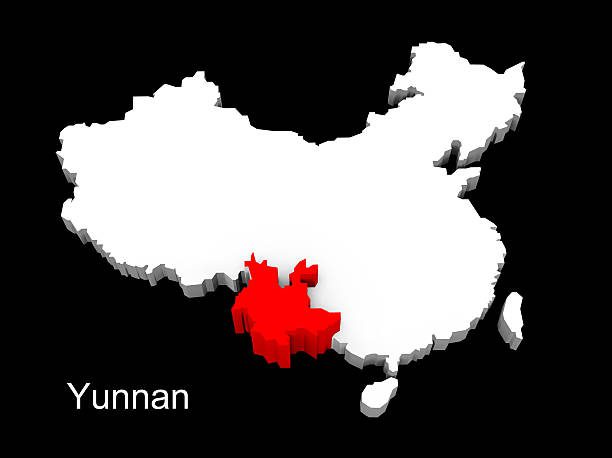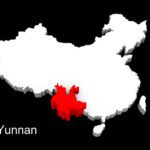Families are the basic unit of society, and their well-being is essential for the overall development of a community or a nation. This technical report provides an overview of family life in the Chinese province of Yunnan. Data for this report was obtained using open-sourced information, such as the National Bureau of Statistics of China.
The report’s main objective is to provide a concise overview of the conditional state of families using Heilongjiang family demographic statistics (e.g., number of families, family structure, racial and ethnic diversity, marriage rates, divorce rates, family income, etc.).
This report is written for stakeholders with an interest in family life in China, in this case, the Chinese province of Heilongjiang. This approach makes certain that the report’s findings are transparent and replicable, and stakeholders can access, verify, and utilize the data sources themselves.

Overview
Home to 46.9 million inhabitants, Yunnan is the most southwestern province of China. Yunnan’s national border is 4,060 kilometers long and borders Myanmar, Laos, and Vietnam. It is also China’s land channel connecting Southeast Asian countries and has more than 20 outbound highways. Yunnan’s mountainous area is as high as 88%, and only 12% is flat land, which is not conducive to mechanized production. Therefore, Yunnan people grow agricultural products with high added value, such as tea, Chinese medicinal materials, and coffee cultivation, ranking first in the country.
Regarding diversity, Yunnan has the largest number of ethnic minorities with a harmonious blend of 26 diverse ethnolinguistic groups distributed across 17 cities and autonomous prefectures. Each group adds a unique thread to the rich tapestry of Yunnan’s traditions, languages, and family practices. Beyond the stunning landscapes, it’s this human kaleidoscope that truly captivates the soul of Yunnan.
Yunnan is a multi-ethnic and multi-religious border province. While the Han is the major ethnic group in Yunnan, about 33.1% of the total population comprises 25 ethnic minority groups. The six leading ethnic minority groups, Yi, Bai, Hani, Zhuang, Dai, and Miao each have over one million people.

At present, there are more than 4.5 million religious believers of all ethnic groups in the province who believe in the five major religions (i.e., Buddhism, Taoism, Islam, Catholicism, and Christianity), with more than 90% being from ethnic minorities. 310 patriotic religious groups of various types have been established in provinces, cities, and counties. It operates Yunnan Buddhist College and its branches, Kunming Islamic College, and Yunnan Christian Theological Seminary. The number of religious believers, religious activity venues, religious clergy, religious groups, and religious schools in the province is at the forefront among all provinces, autonomous regions, and municipalities. It is a key province in China for religious work.
Yunnan is a renowned tourist destination thanks to its vibrant mix of ethnic traditions and stunning natural scenery. The region offers a tapestry of experiences, such as the breathtaking rice terraces belonging to the Hani community, the Dai people’s diverse cuisine, and the Yi people’s ancient tea rituals. The Naxi are famous for their complex hieroglyphic script, Dongba script, which is China’s only surviving script that evolved independently.
One notable celebration is the Songkran Festival, a significant ethnic festivity in the Xishuangbanna Dai Autonomous Prefecture, marking the Dai New Year. Lasting three days, the festival encompasses dragon boat races, the auspicious release of water lanterns, and the engaging water-splashing ceremony. This ceremony, akin to Western snowball fights, holds deeper significance for the Dai—it symbolizes religious purity and goodwill among people. As water represents blessings for good fortune, safety, and health, the splashes exchanged among neighbors, villagers, and tourists reflect these heartfelt wishes.

These cultural exchanges foster greater appreciation for ethnic diversity and bolster the pride of these communities within the nation. Moreover, the mild winter climate in Xishuangbanna draws visitors from other cities, indirectly contributing to the economic strength of Yunnan. Other comparative advantage industries in Yunnan are tobacco, biological resources, minerals, and electric power.
Yunnan’s families are as diverse as its landscapes, each thread forming a rich tapestry of traditions, values, and challenges. This report, armed with official government data and family studies, will navigate the intricacies of family size, composition, and the unique family culture within ethnic groups. The impact of economic realities will also be woven into the narrative, shedding light on the evolving landscape of family life in Yunnan.
Populational Characteristics
Population distribution: Yunnan’s population aged 0-14 is 19.57%, and the population aged 15-59 is 65.52%, which is higher than the national average (i.e., 17.95%, 63.35%). The population aged 60 and above is 14.91%, of which 10.75% is aged 65 and above, lower than the national average (i.e., 18.70%, 13.50%). It is worth noting that it was not until 2019 that Yunnan’s urban population surpassed its rural population. In 2021, the urban population was about 0.05% more than the rural population proportion.
Education: There are 11,601 people with university (college and above) education per 100,000 people in Yunnan, and 10,338 people with high school education (including technical secondary school) per 100,000 people, which is lower than the national average (15,467, 15,088 ). As China vigorously develops higher education, the average number of years of education for people aged 15 and above will be 8.82 years in 2020, 1.06 years higher than in 2010. The illiterate population rate (people aged 15 and above who cannot read) dropped from 6.03% in 2010 to 4.65% in 2020, a decrease of 1.38 percentage points.
Family Size and Composition
According to the main data bulletin of the seventh national census of Yunnan Province, there were 15,146,831 households in the province in 2020. The average population per household is 2.88, 0.65 less than the sixth national census in 2010. The continued shrinking of family size is mainly due to factors such as the increase in the migrant population and young people living independently after marriage. It fully shows that people’s living conditions have improved, and the number of families with multiple generations or multiple people living together has continued to decrease.
However, Yunnan is also one of the seven provinces where “large” households with 4 or more people account for more than 40% of the country. It is characterized by a high birth rate and a low urbanization rate, therefore, the overall proportion of large households is relatively high. The major “large” households are likely located in administrative villages where most ethnic minority groups live together. Therefore, we should carefully consider the variation of family structures across ethnic groups depending on their family traditions and culture.
Ethnic Diversity and Family Structure
Regarding the large number of ethnic groups and the length of the article, I will mainly discuss three representative ethnic minority groups. However, keep in mind that the typical family structure can not represent all families and we have to consider the variation from context to context!
Yi. As the largest ethnic minority group in Yunnan (i.e., over three million). The Yi people typically live in clustered villages, often organized by lineage branches – from a few households to a few dozen. Closely related branches may live nearby, often scattered but adjacent. The Yi boasts a vibrant tapestry of etiquette, customs, and traditions, fostering community spirit and cultural continuity. Yi marriage customs favor in-group endogamy, exogamy within branches, and caste endogamy, with a preference for aunt-uncle unions and prohibitions on uncle-niece/aunt-nephew marriages. Traditionally patriarchal, Yi families follow a father-son joint system with property inheritance through the male line. Only the youngest son remains with his parents after marriage. Women traditionally held limited power, managing household chores but were excluded from property rights and major social activities. Since the founding of New China, this has shifted, with women’s status steadily improving.
Bai. Compared with the Yi people, the gender roles in Bai families are more equal and they value education more. While monogamous, the Bai people traditionally forbade marriage within the same surname or clan, yet allowed unions between uncles and cousins. Open to intermarriage within and beyond the group, traditionally, marriages were typically arranged. Sons became independent after marriage, inheriting property with some favoring younger sons. After the founding of New China, they reformed and abolished patriarchal practices, enabling free love fostered by gatherings like the Shibaoshan Song Festival. The engagement involved a matchmaker delivering the symbolic “three-color water gift.” Elaborate weddings spanned 3-5 days, followed by the tradition of the bride and groom returning to her family home, known as “returning home.”
Hani. Almost all the Hani people live in Yunnan, making it the largest unique ethnic group in the province. It also has a long history and culture as one of the older ethnic groups among China’s ethnic minorities. The Hani people’s transition from a matrilineal clan society to a patrilineal clan society may have occurred about 1,400 years ago. The essence of a father-son family tree is the reflection of the patriarchal family structure, blood relationship, and property inheritance relationship; its form is that the last character or two characters of the father’s name are used as the first character or two characters of the son’s name. The emergence of the father-son naming system and the establishment of patriarchy reflect, to a certain extent, the emergence of political power and private property. Then Hani society slowly transitioned to a class society. The Hani people also maintain the system of continuous names of father and son and generally use the “father and son continuous names” genealogy.
Monogamy is the basic marriage system of the Hani people. The Xishuangbanna area is relatively strict. Abandoning one’s wife/husband and getting remarried is generally considered against Hani customs and will be condemned by public opinion. Most of the marriages concluded before the late 1970s were arranged by parents, that is, parents arranged marriages for their children without considering the children’s own wishes, which was accompanied by domestic violence and low marital happiness rates. Interestingly, such arranged marriages do not lead to higher divorce rates. According to the analysis of researchers from the Yunnan Institute of Ethnology, the main reasons may be family economics, preference for sons over daughters, and consideration of relationships between relatives and friends. The lack of social capital leads to the limitation of social space and indirectly promotes the stability of marital relationships. After 1979, with the implementation of China’s reform and opening up policy, education, medical care, transportation, and other aspects began to achieve greater development. People’s lives gradually improved, and economic factors gradually took a back seat in marriage choices. Arranged marriage and free love began to coexist
Change is an eternal theme of cultural development. With the advancement of modernization, various factors such as changes in the Hani social livelihood style, improvement in education level, guidance of national policies, etc., have continuously impacted the stability of local marriage relationships, and every day Every change in the way of maintaining a marriage relationship plays a certain role in regulating the risks caused by shocks.
Challenges
Impact of Globalization and Economic Development on Ethnic Culture Preservation and Transmission
The waves of globalization and ecological development have posed significant challenges to the preservation and transmission of ethnic cultures in Yunnan Province. Urbanization and labor migration have led to the marginalization of these traditional cultures. For instance, the Naxi people’s Dongba culture, which includes the ancient pictographic Dongba script still in use today, is at risk of extinction. Additionally, some unique ethnic groups in Yunnan have populations of fewer than 50,000, making cultural transmission and preservation even more difficult as the dominant culture increasingly takes over with economic growth.
The Hani people, for example, lack a written language and rely entirely on oral traditions for cultural transmission. With many cultural inheritors aging, the Hani culture faces an existential crisis. In response to this threat, the government has established a Hani cultural rescue team to collect, organize, and publish various forms of oral and intangible cultural heritage from Hani-inhabited areas. This effort aims to ensure that the rich cultural traditions of the Hani and other ethnic groups in Yunnan are preserved and passed down to future generations, despite the pressures of modernization and globalization.
Impact of Tourism on Ethnic Culture Preservation and Transmission
The development of tourism has also significantly impacted the preservation and transmission of ethnic cultures in Yunnan. In Lijiang, for instance, the rapid growth of tourism has led to a decline in the use of the Naxi language among children, and traditional attire is now mostly worn only during festivals. As residents move out of the old town, traditional culture fragments, and external cultures begin to dominate. Over time, Lijiang Old Town might become a hollow shell devoid of cultural substance. Similarly, in Xishuangbanna, the development of villages as tourist attractions since the 1990s has brought significant changes in diet, clothing, beliefs, language, and religion, posing severe challenges to the transmission of Dai culture.
Construction of “Pseudo-Folklore” and “Pseudo-Culture”
In the process of promoting ethnic culture preservation, external researchers, local government officials, and local elites often construct what can be termed “pseudo-folklore” and “pseudo-culture.” This phenomenon is particularly evident in some tourist spots, where authentic ethnic cultures are transformed into performative cultures designed to cater to tourist demands, thereby losing their original cultural value and significance.
Needs for Higher Education and Family in Ethnic Culture Preservation
In Yunnan’s unique geographical and social environment, towns and villages close to the border are relatively less safe. The Yunnan Police College’s anti-drug program is nationally renowned, with many Yunnanese students enrolling to take on the responsibility of safeguarding border security. Over 40 years of anti-drug efforts in Yunnan have seen the sacrifice of 60 police officers, who have defended the borders with their lives, preventing the spread of drugs. Education plays a crucial role in protecting children’s safety and transmitting ethnic cultures. The province implements, “Sansheng” (Three Life) Education, which emphasizes life, survival, and lifestyle education to teach children to stay away from drugs and prevent AIDS. This education model, particularly emphasizing avoiding contact with strangers, is especially important in Yunnan’s border regions.

In summary, Yunnan Province faces numerous challenges in preserving and transmitting ethnic cultures amid globalization and modernization. Simultaneously, through active government intervention and the collective efforts of local communities, it is possible to maintain cultural vitality while adapting to the demands of modern society.
Conclusion
Yunnan stands out as a province with a rich tapestry of diverse cultures and ethnicities, making it an exemplary model for cultural inclusion and respect within family contexts. Its stunning natural landscapes and vibrant cultural heritage attract many tourists.
Chinese culture is often characterized by terms like “collectivism” or “Confucianism,” which may apply to much of the country. However, this broad characterization can obscure the significant diversity within China. In Yunnan, each ethnic group preserves its unique culture, rituals, and values, yet the dominance of mainstream culture threatens these distinct traditions. It is essential to preserve and respect these cultural identities to fully understand the diverse narratives within Chinese families.
Demographically, Yunnan is a rural province where people often live in challenging conditions, impacted by violence, wars, and drugs. Parents in Yunnan teach their children to avoid eye contact with strangers and to limit interactions with unfamiliar individuals from a young age. This form of family education is unique to their developmental path and differs significantly from other provinces.
Writing this family report has deepened my appreciation for the Global Family Project, as I gradually realized that families from different countries, cultures, and ethnic groups exhibit diverse structures and needs. Treating all families as homogeneous risks offering inappropriate support and overlooking their specific needs. To create a truly inclusive community, family scholars must carefully consider and accurately describe the family systems and their dynamics.





